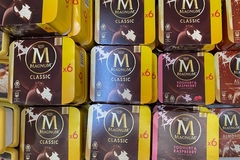
- Industry news
Industry news
- Category news
Category news
- Reports
- Key trends
- Multimedia
- Journal
- Events
- Suppliers
- Home
- Industry news
Industry news
- Category news
Category news
- Reports
- Key trends
- Multimedia
- Events
- Suppliers
Consumers ready to embrace food waste-fighting QR codes on milk cartons, finds Cornell study

04 Jul 2022 --- A new study by Cornell University, US, has found that consumers are willing to support QR codes to better understand how long milk is safe to consume. The researchers say this solution could eradicate the need for “use-by” and “best-by” dates printed on milk cartons and gallon jugs and reduce agricultural and food waste with more accurate and informative scanning technologies.
In the US, dairy products are among the top three food groups with the largest share of wasted food, according to Samantha Lau, a doctoral student in food science who works in the lab of Martin Wiedmann, the Gellert Family Professor in Food Safety in the College of Agriculture and Life Sciences.

In the early spring semester, Lau, also working with Cornell’s Milk Quality Improvement Program, connected with the Cornell Dairy Bar – which sells fluid milk in addition to ice cream on campus. She wanted to assess consumer acceptance for QR code technology that may one day replace the static “best-by” or “sell-by” dates commonly found on food products.
Customers had a choice: purchasing milk with printed “best-by” dates or buying containers with QR codes, which, when scanned by a smartphone, would display the “best-by” date. In the same Cornell Dairy Bar study, Lau placed a dynamic pricing element where consumers were encouraged to purchase milk with a shorter remaining shelf life – by offering a price discount as the “best-by date” approached.
“During a two-month study, over 60% of customers purchased the milk with the QR code, showing a considerable interest in using this new technology,” says Lau. “This revealed that the use of QR codes on food products can be an innovative way to address the larger issue of food waste.” According to Innova Market Insights, a majority of global consumers (72%) say they are interested in engaging with QR codes.
According to Innova Market Insights, a majority of global consumers (72%) say they are interested in engaging with QR codes.
Overcoming consumer confusion
For fluid milk, ensuring quality and accurately portraying an expected shelf life is key, but microbial spoilage is a major contributor to food loss and waste globally, highlights Lau, the lead author of a related scientific paper.
Due to consumer confusion about when to toss it from the fridge and retailers being left with unsold product, fluid milk is responsible for about 65% of dairy product food waste – a loss that costs US nearly US$6.4 billion annually, according to the paper.
The environment is affected too. Fluid milk production, processing and transportation around the world are responsible for 5.3 pounds of carbon dioxide equivalents per pound of milk, according to the United Nations’ Food and Agriculture Organization.
“We need to do more throughout the whole food system,” says Wiedmann, who also directs the Milk Quality Improvement Program and is a faculty fellow at the Cornell Atkinson Center for Sustainability, “rather than just focusing on one component.”
Helping consumers to discard less food by providing them with more accurate “best-by” dates and information until when food products can be consumed has tremendous potential to save consumers money and reduce environmental impact, he adds.
With dates printed on cartons, consumers typically buy the most-distant dated milk, but that leaves drinkable milk on store shelves, where retailers throw it out later.
“This makes digital trends valuable, particularly if they’re combined to really allow us to collect data along the food chain,” notes Wiedmann. In January, UK supermarket Morrisons scrapped “use- by” dates on own-brand milk.
In January, UK supermarket Morrisons scrapped “use- by” dates on own-brand milk.
Fresh milk reminders
In addition to information on drinkability and dynamic pricing, QR code-enabled milk cartons could be used to communicate with smart refrigerators to inform a household of the need for fresh milk.
Smart refrigerators ultimately could also tell consumers about a suggested recipe that uses the products in the refrigerator that are close to the end of shelf life, continues Wiedmann. “This type of new digital food system infrastructure can reduce food waste,” he says.
Supermarkets ditch “use-by” dates
In the UK, Morrisons supermarket recently ditched “use-by” dates on 90% of its own-brand milk, encouraging consumers to instead perform sniff tests to help to avoid food waste in the home.
Similarly, Co-op supermarket has removed “use-by” dates from all its own-brand yogurts.
According to Innova Market Insights, a majority of global consumers say they are moderately (27%), very (25%) or extremely (20%) interested in engaging with QR codes. Moreover, only 15% of global consumers say they would never check QR codes on product packaging that provide extra information.
By Joshua Poole










